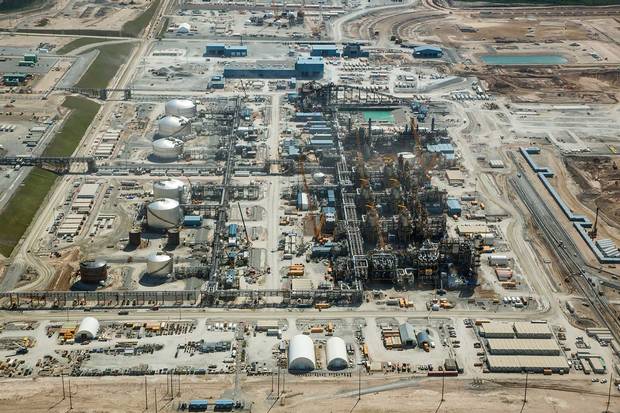Top 1000 rank #17 | 2016 Revenue $27.4 billion | 2016 Profit $2.2 billion
To see the full Top 1000 rankings, click here.
As the downturn in crude markets drags on, the oil patch hasn't provided much sanctuary for investors seeking safe returns. If there's anything resembling a defensive play in the sector, though, it's Imperial Oil Ltd.
The producer and refiner has exhibited staying power, with roots dating back to 1880. More importantly, it offers the comfort of an extremely wealthy parent—U.S. oil major Exxon Mobil Corp.—which partners with Imperial on big-ticket projects and helps the company merit its top-notch credit ratings.
Imperial had a profit windfall in 2016 thanks to some well-timed deal-making. With oil prices slumping into the $20s (U.S.) a barrel, the company sold off its remaining 497 Esso-brand gas stations to Alimentation Couche-Tard, 7-Eleven Canada, Parkland Fuel and others. That boosted earnings by $1.7 billion, pushing total net income to $2.2 billion, or nearly double the previous year's. In the first quarter of 2017, Imperial notched a $333-million profit—up from a $101-million loss in the same period last year.
Not all the news has been positive, however. Imperial's oil sands operations—including the Kearl mine, its Syncrude Canada interest and a new phase at the Cold Lake project, known as Nabiye—came up short of production targets, prompting some analysts to slap "hold" ratings on the company's shares. That, combined with the recent tendency of global oil prices to teeter on either side of $50 (U.S.) a barrel rather than gradually rise, has weighed on the stock this year.

Rick Boden
CEO Rich Kruger has said Imperial's main focus is the reliability of its operations and cost efficiency, now that the multibillion-dollar spending spree on new projects is over. Kearl, which cost $21.8 billion, and Nabiye, at $2 billion, together have a capacity of 260,000 barrels a day.
With all of that new production from the oil sands, Imperial is more exposed to volatile global oil markets than it was before, says Chris Cox, an analyst at Raymond James. "But the balance sheet is still very strong, and those assets are now producing and don't require much in the way of new capital spending," he says. "So even if you assume persistent operational challenges, they're still generating a ton of free cash flow."
Meanwhile, Imperial has stayed on the sidelines—so far, at least—as a staggering $30-billion worth of oil sands assets changed hands within just a few months. During a recent discussion with reporters, Kruger was coy about Imperial's interest in joining the M&A action.
It may not be the right time for that. Market response to the recent flurry of transactions, driven mainly by domestic players buying bitumen assets from foreign-based companies, has been mixed. Canadian Natural Resources Ltd.'s $8.5-billion (U.S.) takeover of Royal Dutch Shell's oil sands holdings, for example, was acclaimed by analysts and investors. But shares in Cenovus Energy Inc. tumbled following its $17.7-billion purchase of partner ConocoPhillips's interest.
Despite its uneven operational re-sults, Imperial has boosted the dividend every year for more than two decades. With its big spending done for now, TD Securities analyst Menno Hulshof believes shareholder-friendly moves such as higher payouts and share buybacks will likely play a bigger role in Imperial's capital allocation decisions.